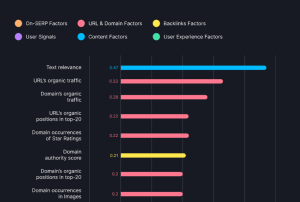Understanding and effectively implementing LSI keywords WordPress is pivotal to boosting your site’s visibility and search engine ranking. These latent semantic indexing keywords are intricately tied to your primary keyword, aiding search engines in comprehending the context of your site’s content. By providing additional context to your main keyword, LSI keywords enhance your content’s relevance to specific search queries and pave the way for a more organic, reader-friendly content.
As integral components of WordPress SEO, LSI keywords not only broaden a WordPress site’s organic reach and visibility but also help content surface in diverse search queries. Our seo wordpress guide provides a comprehensive understanding of how you can streamline your blog content for better search engine rankings.
By naturally weaving relevant LSI keywords throughout your content and employing prudent methods to research and identify these keywords, you can significantly enhance your WordPress SEO and subsequently, your search engine results visibility.
”Summary
LSI keywords (Latent Semantic Indexing) are a powerful tool to enhance your website’s visibility and ranking on search engines. These keywords are closely related to your primary keyword, aiding search engines in comprehending your site’s content and context. Incorporating LSI keywords can result in a more organic and engaging content for users.
They play a significant role in WordPress SEO by assisting search engines in understanding and indexing content. The strategic use of LSI keywords can greatly boost your site’s organic reach and visibility, leading to increased traffic and conversion rates.
Identifying and utilizing relevant LSI keywords can significantly enhance your WordPress SEO. Two effective methods to find these keywords include Google research and SEO tools like SEMrush, Ahrefs, and LSIGraph. However, it’s crucial to avoid keyword stuffing and focus on creating high-quality content for a better user experience.
Effective use of LSI keywords in key areas such as the title, subtitles, meta description, and the first and last paragraphs of your blog post can greatly improve your WordPress SEO. Moreover, incorporating LSI keywords in images can further enhance your site’s visibility in search engine results.
Understanding Latent Semantic Indexing (LSI) Keywords
In the realm of search engine optimization (SEO), understanding latent semantic indexing (LSI) keywords is critical for improving your website’s visibility. These are essentially keywords related to the main keyword, and they play a crucial role in helping search engines understand the content and context of your site. Let’s dive deeper into understanding LSI keywords.
The Concept of LSI Keywords
Latent Semantic Indexing (LSI) is a mathematical method used by search engines to study and compare relationships between different terms and concepts in the content. LSI keywords are words and phrases with a high degree of correlation to your target topic. Google’s algorithm uses these to help determine the content quality and relevance to the search term. For instance, if you’re writing a blog about ‘LSI keywords WordPress’, related LSI keywords could be ‘SEO techniques’, ‘keyword research’, ‘WordPress SEO plugins’, among others.
Why LSI Keywords Matter
LSI keywords are essential for SEO because they provide a contextual background to your main keyword. By including LSI keywords in your WordPress content, you’re giving search engines more context about your content, and this can help improve your search ranking. For example, if your main keyword is ‘LSI keywords WordPress’, and you also include related LSI keywords like ‘SEO strategies’ and ‘improving site visibility’, search engines will have a better understanding of your content’s relevance to the search query.
Furthermore, LSI keywords help to improve the user experience by creating more natural and readable content. Instead of stuffing your content with the same keyword, you can use various LSI keywords that make the text more engaging for the reader while still being SEO-friendly.
The Role of LSI Keywords in WordPress SEO
LSI keywords play a significant role in WordPress SEO, acting as contextual markers that help search engines understand and index content. They operate on a deeper level than primary keywords, contributing to the organic reach and visibility of a website. Let’s delve into how LSI keywords affect WordPress SEO and why they are crucial to your strategy.
Enhancing Search Engine Understanding
Search engines like Google use LSI keywords to grasp the context of content. When you incorporate LSI keywords into your WordPress content, you are providing additional cues about what your content is about. For instance, if your primary keyword is “Apple,” LSI keywords like “Mac,” “iPhone,” and “iPad” would indicate you’re discussing technology, not fruit. This context assists search engines in accurately indexing your content, leading to improved search result placement.
Improving Organic Reach and Visibility
LSI keywords can also boost the organic reach and visibility of your WordPress site. By including them, your content becomes relevant for a wider range of search queries. Therefore, instead of ranking for only a single primary keyword, your content has the potential to appear in various related search results. For example, a blog post about “WordPress SEO tips” could also rank for “improving WordPress SEO” or “WordPress SEO strategies” if these LSI keywords are incorporated appropriately. This expanded visibility can lead to increased traffic and, ultimately, higher conversion rates.
Methods to Research and Identify LSI Keywords for WordPress
In the process of improving your WordPress SEO, an important step is to research and identify LSI (Latent Semantic Indexing) keywords. This procedure not only enhances your SEO strategy but also helps search engines understand your content better. Hence, it boosts your visibility in search engine results.
Finding LSI Keywords with Google Search
One of the easiest methods to find LSI keywords is through Google. When you type a keyword into the Google search bar, it automatically provides a list of related searches at the bottom of the page. For example, if your main keyword is “WordPress SEO,” related searches may include “WordPress SEO plugins,” “WordPress SEO tips,” or “improving WordPress SEO.” These are potential LSI keywords that you can incorporate into your content.
Utilizing SEO Tools
Besides Google, there are several SEO tools that can help you identify LSI keywords. Tools like SEMrush, Ahrefs, and LSIGraph provide a comprehensive list of LSI keywords related to your primary keyword. For instance, if you input “WordPress SEO” into LSIGraph, it will generate a list of related keywords based on what users are searching for. Such tools are particularly useful for digging deeper into keyword research and finding long-tail LSI keywords.
Remember, while incorporating LSI keywords into your WordPress content, it’s essential to ensure that they fit naturally into the context. Overstuffing your content with keywords can lead to penalties from search engines. LSI keywords WordPress strategy should be about creating valuable, high-quality content that provides a great user experience.
Implementing LSI Keywords in WordPress Content
Latent Semantic Indexing (LSI) keywords are a fundamental aspect of WordPress SEO. Utilizing them effectively in your content can significantly enhance your SEO rankings. Let’s delve into how to implement LSI keywords in WordPress content.
Strategic Placement of LSI Keywords
LSI keywords should be integrated naturally throughout your WordPress content. It’s essential to include them in critical areas such as the title, subtitles, meta description, and the first and last paragraphs of your blog post. However, avoid keyword stuffing as it can have a negative impact on your SEO. For instance, if your main keyword is ‘WordPress SEO,’ your LSI keywords could be ‘improving WordPress SEO,’ ‘WordPress SEO tips,’ or ‘WordPress SEO plugins.’ These should be strategically placed within your content to enhance its relevance and context.
Utilizing LSI Keywords in Images
Images can also contribute significantly to your SEO efforts. When uploading images to your WordPress content, it’s recommended to use LSI keywords in the image file name, title, description, and alt text. This approach makes your images SEO-friendly and improves the overall optimization of your content. An example would be naming an image file as ‘WordPress_SEO_strategy.jpg’ and including LSI keywords in the alt text like ‘effective WordPress SEO techniques.’
Remember, the use of LSI keywords in WordPress should not compromise the quality of the content. It’s all about maintaining a balance between optimization for search engines and providing value for your readers. By implementing LSI keywords effectively, you can enhance your WordPress SEO and improve your visibility in search engine results.
Conclusion
Mastering the use of LSI keywords WordPress is a powerful strategy that can significantly boost your website’s visibility and increase organic traffic. These keywords, being contextually linked to the main keyword, not only help search engines understand and index your content better but also increase the relevance of your content to search queries. They result in a more natural and enjoyable content for users, enhancing their experience.
Implementing LSI keywords in key areas such as the title, subheadings, meta description, and within the content itself, can significantly improve your SEO ranking. However, it’s crucial to balance the use of LSI keywords and avoid keyword stuffing, maintaining high-quality content. With the right application of these strategies, you can maximize the power of LSI keywords in WordPress SEO and enhance your site’s visibility in search engine results.

